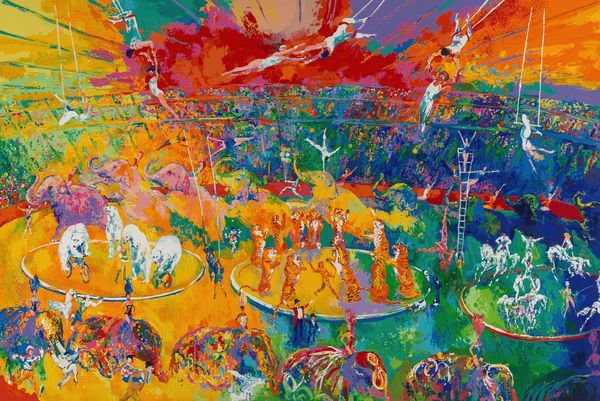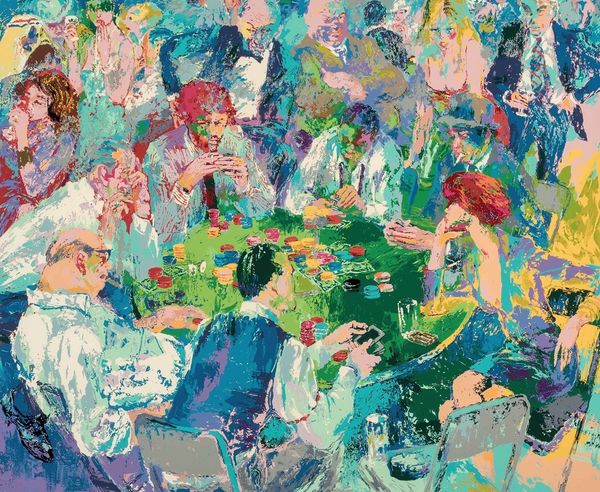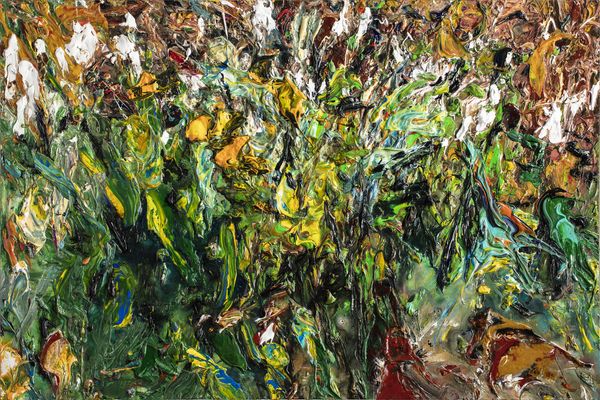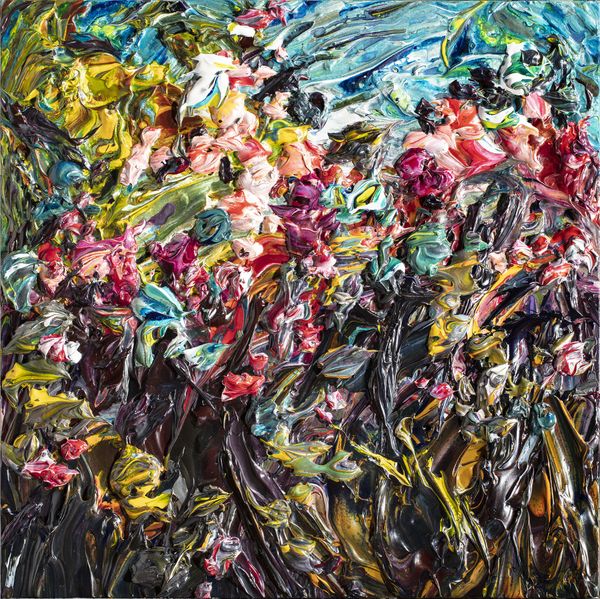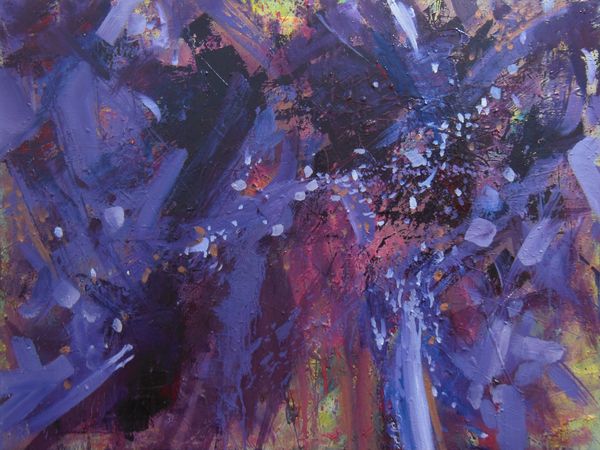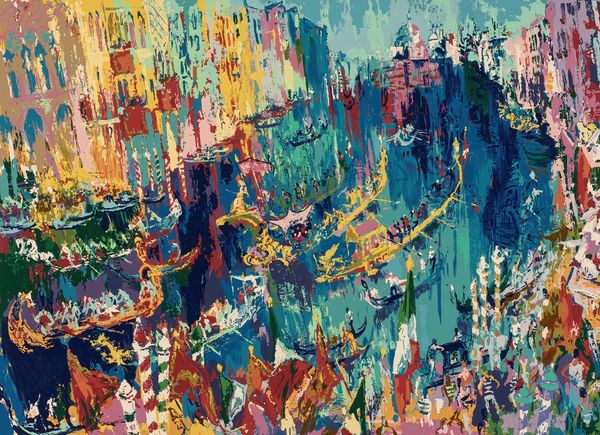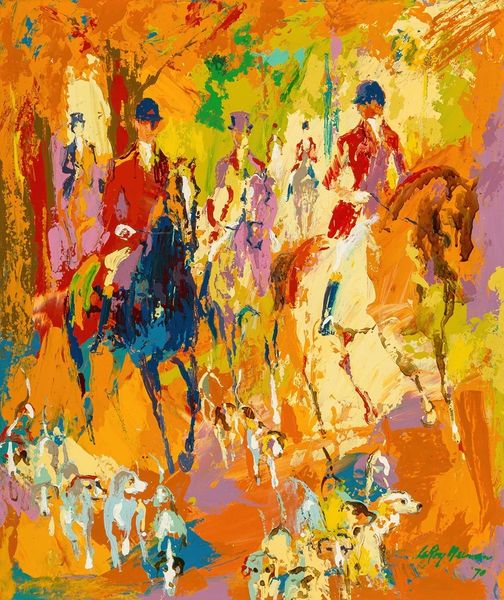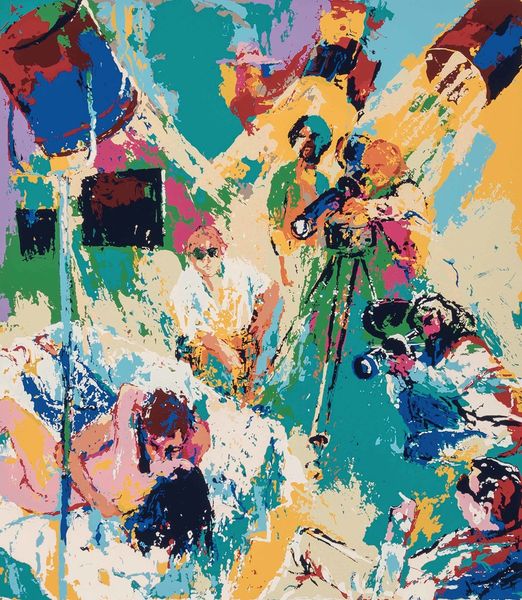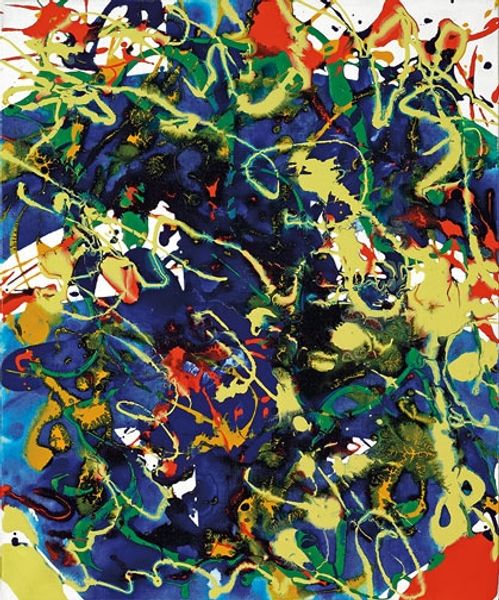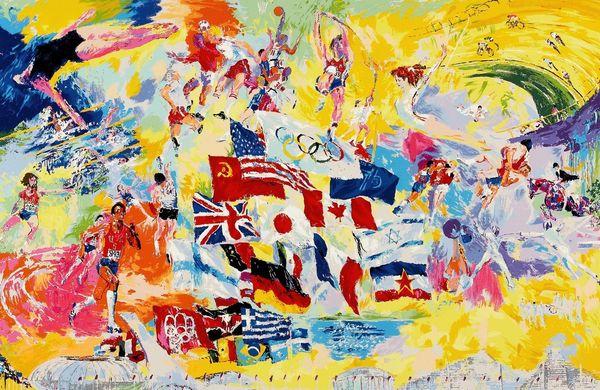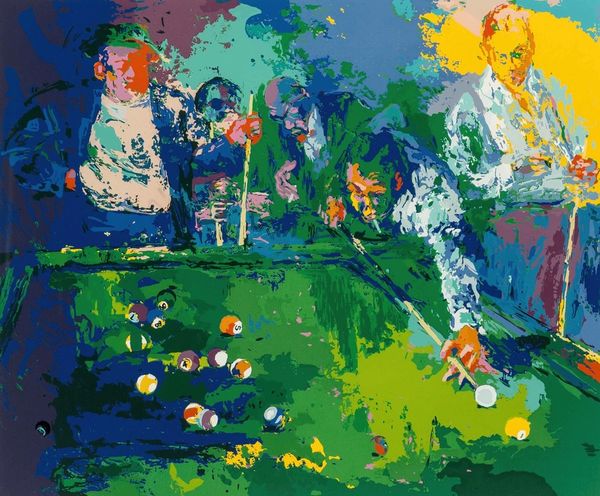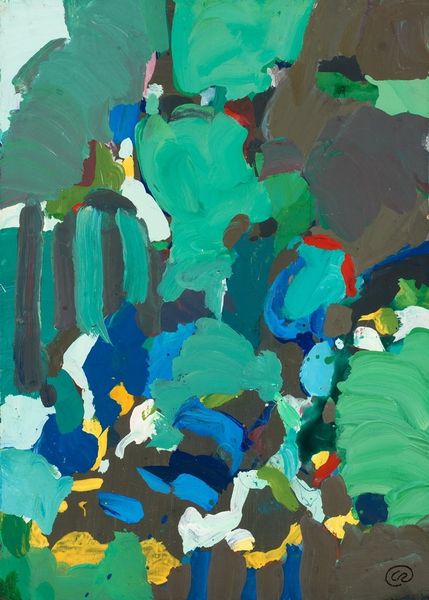
Copyright: Modern Artists: Artvee
Curator: LeRoy Neiman's "Napoleon at Waterloo," created in 1988 using acrylic paint, presents an iconic historical moment filtered through a contemporary lens. Editor: Immediately, the chaotic swirl of colors strikes me. The expressive brushstrokes feel more attuned to capturing the emotional frenzy of battle than historical accuracy. There is nothing heroic here, just madness. Curator: Precisely. Observe how Neiman uses a Fauvist-inspired palette - vibrant blues, greens, and yellows—to depict the scene. This choice is striking for a historical painting and destabilizes traditional representations of war as orderly or glorious. The visible brushwork creates a sense of immediacy, pulling the viewer into the chaos. Editor: Absolutely. By rejecting a polished, academic style, Neiman forces us to reconsider the narratives surrounding war and leadership. Waterloo, a definitive defeat for Napoleon, becomes a stage for exploring the disarray and suffering inherent in conflict. Consider, too, that this painting comes more than 150 years after the event itself; what contemporary resonances was Neiman exploring through revisiting this turning point in European history? Curator: We might also consider Neiman's use of figuration. While identifiable, the figures of Napoleon and his troops are abstracted, almost dissolving into the broader landscape of conflict. This formal strategy diminishes the individual and emphasizes the collective experience. The lines are active, a cacophony of near-scribbles to build larger forms and structures of near recognizable shape, like Fauvist strategies of visual deception, Editor: This approach also underscores the dehumanizing aspects of war, where individual soldiers become anonymous parts of a larger, destructive machine. Napoleon, typically presented as a brilliant strategist, here is simply another figure amidst the tumult, stripped of his authority and grandeur. His presence does nothing to tame or mediate the raw energy portrayed here. The bright coloring doesn’t add glory to warfare, but, rather, it feels like poison, or perhaps more literally, the violent aftermath of war itself. Curator: I see that quite clearly. Through a blend of contemporary expressionism and historical subject matter, Neiman challenges our understanding of both art and history. Editor: Indeed. The painting serves as a reminder that history is never a settled account but an ongoing process of interpretation and re-evaluation. The social weight and historical narrative coalesce in Neiman’s brushstrokes.
Comments
No comments
Be the first to comment and join the conversation on the ultimate creative platform.
